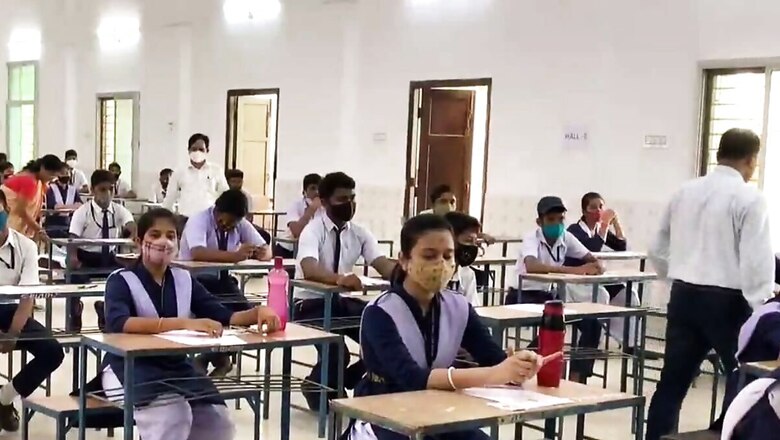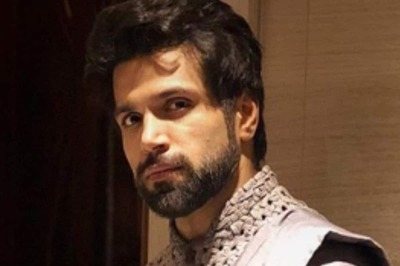
views
The academic commissars are back again, haunted, apparently by the spectre of saffronisation of the National Council of Educational Research and Training (NCERT) textbooks. From concerned historians, a pseudonym for the old contractors of the history syllabus in India, to journalist-activists eager to peddle the political agenda of the elites of the ancient regime, to the scores of political parties desperate to attain leverage against the incumbent party, everyone has made a synchronised and scripted pitch against the rationalisation measure undertaken by the NCERT to unburden the textbooks from excess and repetitive contents — a move at the heart of pedagogical discourse worldwide.
The ongoing hullaballoo has the familiar template which India has been witnessing since the late1990s when the BJP-led National Democratic Alliance (NDA-1) was in the power. While periodic revision of the textbooks is a much-warranted exercise, the acolytes of self-entitled old vanguards in collaboration with the contractors of the academia have been readily acting as the narrative factory for the political parties who are in Opposition today.
Their template relies upon the same old trope of demonising the ‘Indian Right’ incessantly by employing a pretentious and clichéd volley of semantics: saffronisation, Talibanisation, anti-minorityism, majoritarianism, erasure of history, and sweeping changes, among others. In fact, their repetitiveness is so anachronistic that even on the parameter of a passing analysis of the ongoing controversy, they cut a sorry figure.
Against the backdrop of allegations of sweeping changes in textbooks with apparent ideological motivations, it would be interesting to see whether there is any pattern to the changes, particularly in social science. For instance, besides minor changes, 4 out of 11 chapters in Class XI and 3 out of 15 chapters in Class XII have been dropped from history textbooks which pertained to the themes of human evolution, confrontation of cultures, industrial revolution, chronicles of Mughal courts, colonial cities, Gandhi and nationalist movement and partition. Here, one doesn’t need rocket science to understand that there is no ideological pattern to the pruning of the syllabus. In particular, the howl and cry by the gatekeeping cohorts of Indian academia over the deletion of one chapter on Mughals, namely, Kings and Chronicles; the Mughal Courts (C. Sixteen-Seventeenth Centuries) doesn’t change the centrality of the Mughal era from the textbook. The deletion, as per the NCERT, was warranted as “the dynastic and chronological account of Mughals have already been discussed at length in the class VII textbook. Therefore, it will not affect students’ understanding of the political aspects of Mughal history, if this theme is dropped.”
Further, the allegation that there has been a selective dropping of some passages to allegedly saffronise the content needs to be assessed, by broadening the ambit of dropped passages and sections about the events which generate political passion in India. Therein, four instances warrant attention. One is the deletion of the caste reference of Nathuram Godse who assassinated Gandhi. Two, the deletion of the section which implied that Mahatma Gandhi was more disliked by the Hindu extremists in comparison to the others. Three, the reference to the 2002-Gujarat Riot being the latest example of Ghettoization in the aftermath of communal riots. Four, the complete deletion of the section dealing with controversies regarding Emergency.
Now, do these sections make any ideological pattern? What ideological motive could be there to drop the section dealing with the controversies regarding the Emergency? Certainly, one cannot allege that the NCERT tried to whitewash the Indian National Congress by deleting a section on Emergency. Further, what is the justification to employ the Brahmin caste reference of Nathuram Godse in the assassination of Gandhi? Was Godse’s being a Brahmin the prime determinant of his motivation to kill Gandhi? Then how do we square up this with Nehru also being a Brahmin? Similarly, the statement that in the backdrop of partition, the Hindu extremists had more dislike for Gandhi, in other words, implies that the Muslim extremists who partitioned India and massacred Hindus and the Sikhs were relatively soft on Gandhi. Also, at a time when we are witnessing the latest instances of ghettoization in West Bengal in the aftermath of post-poll violence in 2021 and before that 2012 Muzaffarnagar riots in Uttar Pradesh, stating the 2002 Gujarat Riots as being the latest example of Ghettoization is both factually anachronistic and ideologically motivated, to demonise a state and its people.
In fact, one aspect of the rationalisation exercise by the NCERT has been completely overlooked. There has been an addition of five ancient women thinkers, Apala, Ghosha, Lopamudra, Maitreyi, and Vishwambhara, in the Class VI textbook. If optics are the frame to assess the move and if the removal of one chapter on Mughals is projected as saffronisation, then to the howling and crying souls, the addition of five women thinkers should be seen as an exercise in gender empowerment. However, such analytical modes would be absurd as NCERT textbooks have been framed as a continuum from class VI to class XII wherein themes need to be seen by treating them as one unit to avoid unnecessary repetition and overlaps. Also, textbooks should not be a substitute for hold-all general knowledge books which are readily available and easily accessible.
The author is a political analyst associated with PRACCIS. Views expressed are personal.
Read all the Latest Opinions here


















Comments
0 comment